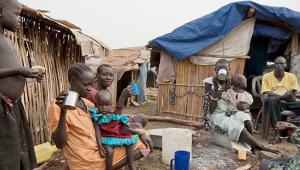In a joint warning, the UN’s Food and Agriculture Organisation, Children’s Fund (UNICEF) and World Food Programme warned that extreme hunger is pushing people in parts of the country to catastrophe, after a new UN Integrated Food Security Phase Classification (IPC) analysis found that at least 30,000 people are facing starvation and death.
The IPC categorised 30,000 people as in phase 5 ‒ known as “catastrophe”. A further 830,000 are in “emergency” (phase 4) and 3.1m in “crisis” (phase 3).
This is the first time an IPC analysis has found any part of the country’s population in phase five since conflict in the country began two years ago.
While the IPC noted that famine is not declared at this time, partly because of restricted access to areas severely affected by the conflict, there was now a “concrete risk” of famine occurring between October and December this year.
Joyce Luma, country director of the WFP, said: “This is the start of the harvest and we should be seeing a significant improvement in the food security situation, but this is not the case in places like southern Unity State where people are on the edge of a catastrophe that can be prevented.”
The UN agencies called on all parties of the conflict to allow immediate and unrestricted access for humanitarian relief.
Aside from the conflict, erratic rainfall along with high food prices, fuel costs and inflation, have all contributed to the crisis.
The news comes as Sudan, from which South Sudan gained independence in 2011, becomes a donor of the world’s largest agricultural research partnership – the CGIAR fund, formerly known as the Consultative Group on International Agricultural Research.
The CGIAR fund uses science and technology to reduce poverty, increase food security, improve health and nutrition and ensure the stable management of natural resources across the developing world.












